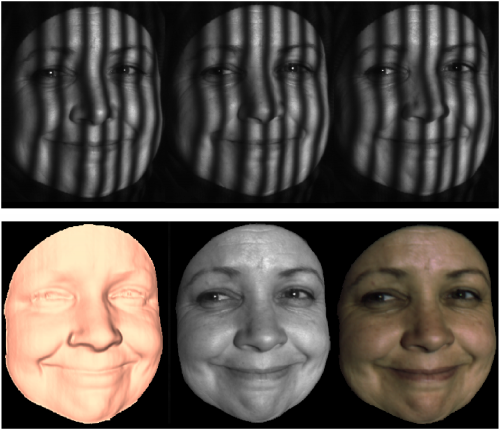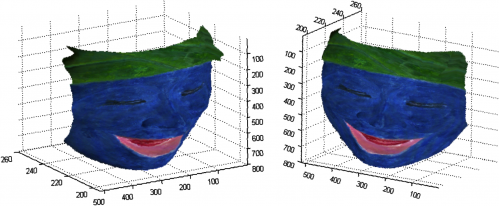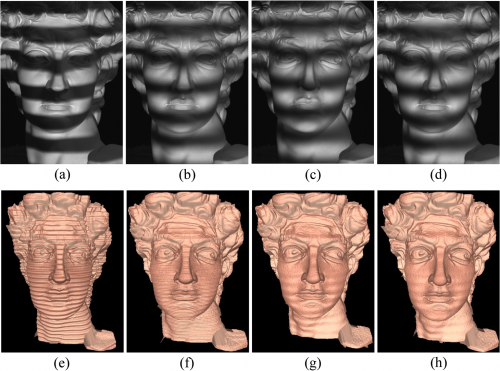Researchers develop 3-D reconstruction software

Researchers have designed a program to generate 3D imagery from the projection and digitization of binary data that allows reconstruction of various objects in order to reproduce parts of classic automobiles, prehispanic antiques, as well as serving as a tool for face recognition.
This software performs a 3D scan of the original mechanical parts or faces to obtain a virtual model of the real dimensions of objects or parts that are no longer manufactured so they can be reproduced, said Jorge Luis Nuñez Flores, professor at the Department of Electronics of the University Center for Science in Engineering (CUCEI) of UDG.
"The reconstruction technique involves the projection and acquisition of binary patterns (stripes of clear and dark lights, deployed vertically and horizontally) using a commercial projector and a digital camera," says Nuñez Flores.
To obtain the 3D model, a series of clear and dark lights are generated using a cannon, which must be projected laterally on the object to be scanned. Then the 3D camera captures binary patterns (sequences of lines) that are processed by the software from the detected dimensions to form the model with the real measurements.
During this process, eight filters are projected in different gray tones that serve to give volume, texture and correct definition to the object or face. After that, the camera captures the image sequence and transmits it to the software interface, where the model is presented in 3D, added the CUCEI professor.
One of the uses of the program is to manufacture pieces that are no longer available, although it is necessary to have the original object, to ensure that the technical specifications are appropriate, and that the replica is functional.

"The technique developed by both research groups could be used for 3D scanning of original mechanical parts, archaeological findings or for the generation of virtual models respecting real dimensions (topographies)," the specialist explained.
In the case of facial recognition (biometrics), the 3D camera will not take photos, but obtain depth and facial features, information that will be used to determine traits that allow identification.
Flores Núñez said the next step is to make the models compatible with current 3D printing technology, so that the digitized objects can be easily manufactured.

Provided by Investigación y Desarrollo





















